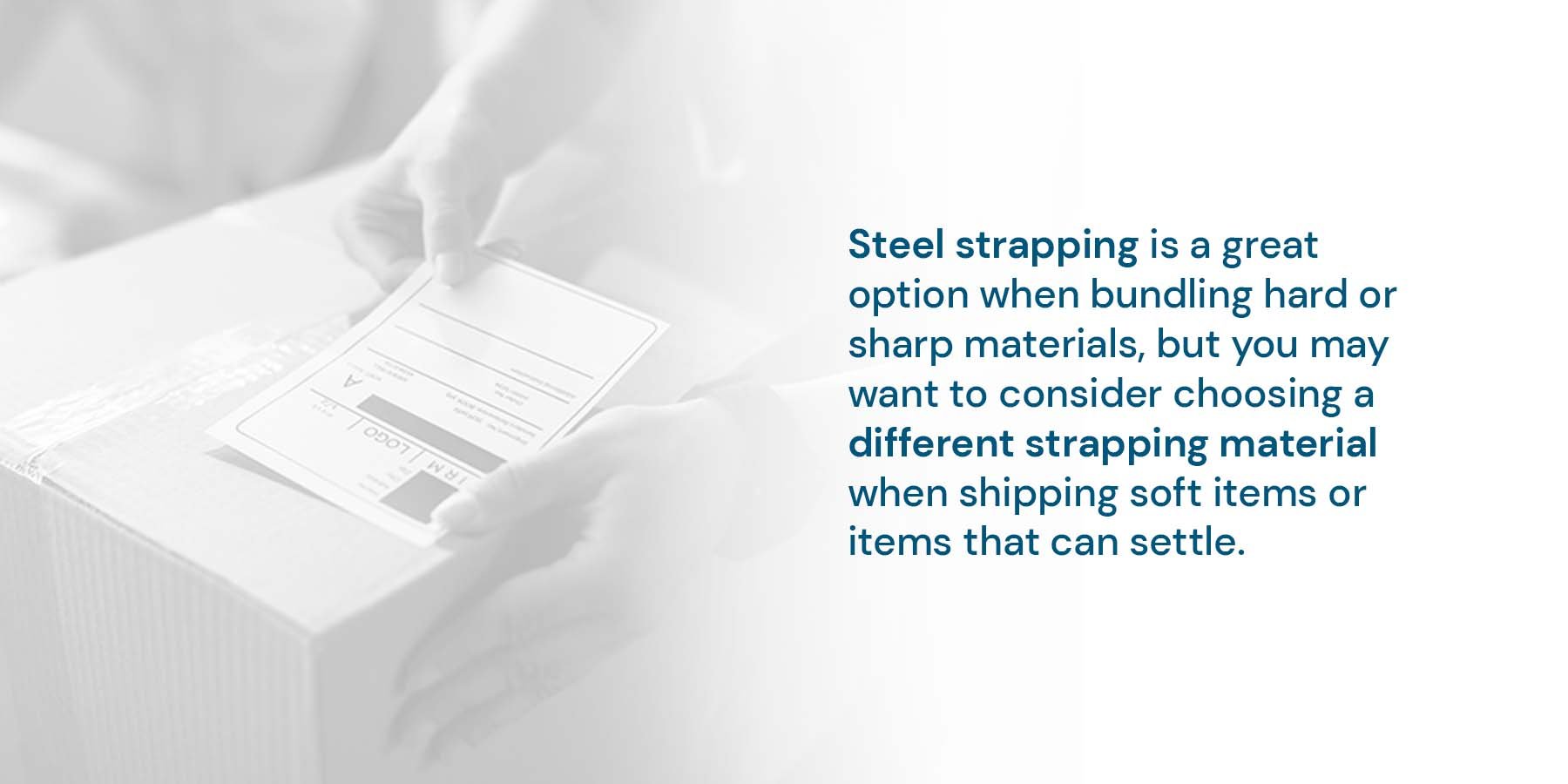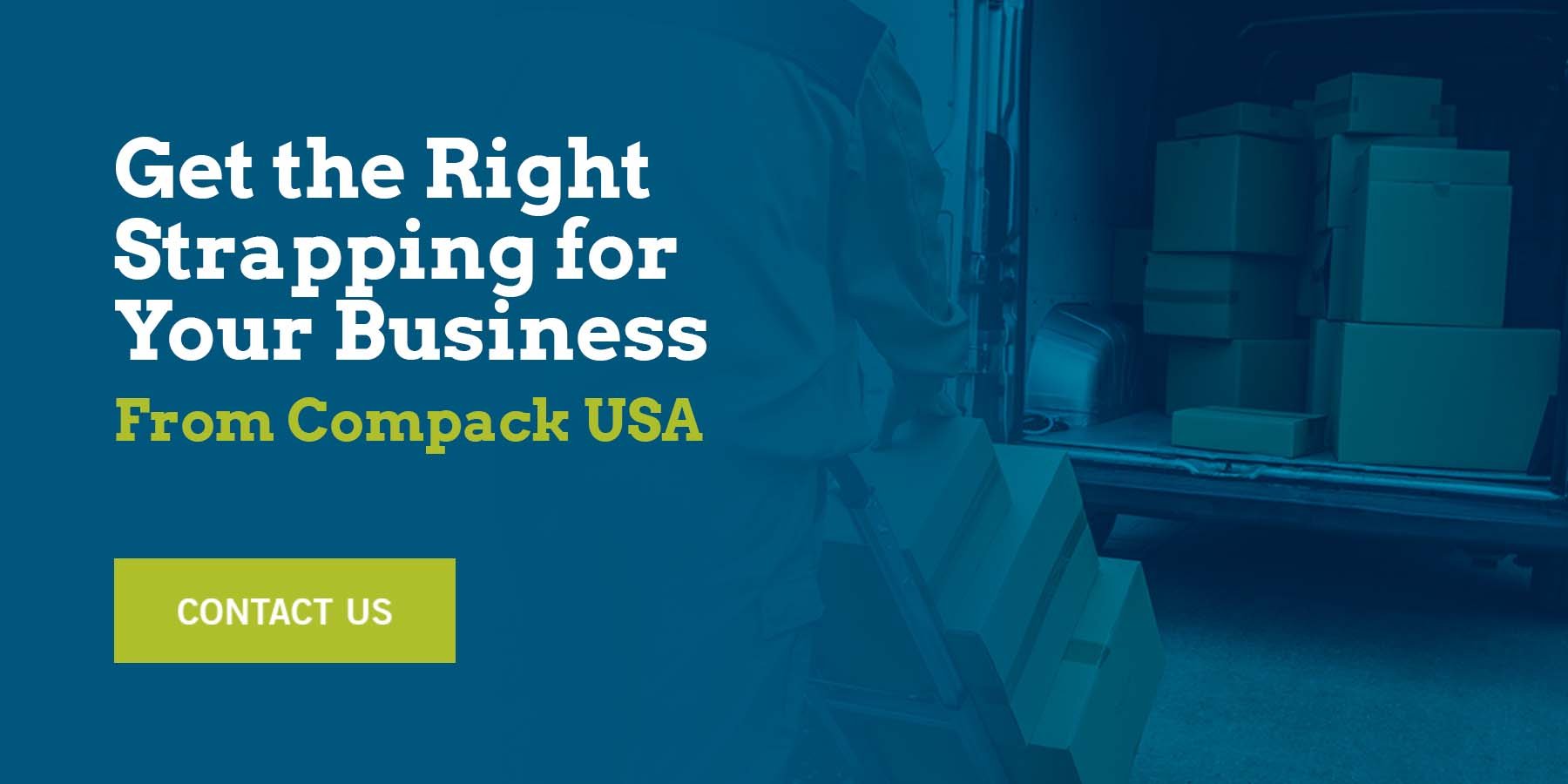Types of Strapping and Their Differences
Strapping is a flat material used for banding and bundling items to hold them in place. Businesses often rely on strapping to keep their products safe and secure during transit. Other businesses may use strapping to reinforce or fasten their products. Strapping is an essential part of various industries, including packaging, shipping, agriculture, construction, lumber yards and more. Businesses that need to hold items together with something stronger than string or twine will count on strapping to get the job done.
If your business is in the market for some strapping, you'll find that several types of strapping exist for you to choose from. Each has its own benefits and could be better or worse than another type for certain applications. Continue reading to learn more about the types of strapping available to help you better choose the option that is right for you.
Strapping Materials
The four main types of strapping materials are steel, woven, polyester and plastic. Find out more information about each type of material below.
Steel Strapping
Steel strapping is one of the more expensive strapping options, but it has many benefits. Steel strapping offers a robust build quality noted for its ability to maintain its integrity — even when securing the heaviest loads. Due to its strength and durability, steel strapping is also a great option if the products you're strapping have sharp corners or edges. Sharp objects can cut through other strapping materials. Steel strapping avoids this issue, giving you peace of mind.
Steel strapping is a great option when bundling hard or sharp materials, but you may want to consider choosing a different strapping material when shipping soft items or items that can settle. Steel can damage softer items during transit. Steel is also unable to elongate or retract, making it a poor choice for bundling products that can experience settling. Steel also rusts, so you may want to choose another strapping material if your bundle will be exposed to the elements for several days or weeks.
Polyester Strapping
Polyester is a type of plastic that has grown in popularity for uses in strapping due to it its dependability and many benefits. Often used as a substitute for steel strapping because of its strength, polyester strapping also has the following characteristics:
It has the ability to elongate and retract to always keep a firm hold on your bundle.
It's softer than steel, which keeps it from digging into your products even when tightly bound.
Polyester won't rust, allowing you to avoid rust stains on your items.
Polyester strapping is a great choice for heavy loads like packs of timber, bricks or blocks. Keep in mind that it can decompose and weaken when exposed to ultraviolet (UV) rays for extended periods. Sharp items can also cut into polyester and cause it to break, so it's best used to strap down softer materials or items wrapped in a soft, protective layer. Battery operated tools can significantly speed up hand strapping operations and eliminate seals, for larger volume applications a fully automated line is used.
Woven Strapping
Woven strapping sets itself apart from the rest by binding several fibers together to create a strap renowned for its durability. Woven strapping handles extremely heavy loads without breaking thanks to the even distribution of weight provided by the weaved pattern. They're also one of the best options for oddly shaped items like machines, or items that are fragile.
Many businesses prefer woven strapping because of its environmental benefits. Woven straps are safe to dispense and offer easy disposal for your end customers. Woven strapping's ability to maintain its shape — even during harsh weather conditions — also makes it a popular option. And since you can apply it with a high joint efficient buckle and a ratcheting tensioner, woven strapping is a great option for companies with inexperienced handlers.
Plastic Strapping
Polypropylene-based plastic straps are an affordable strapping option for a variety of situations. You can get a firm hold at a reasonable rate when performing certain applications like palletizing items, sealing boxes or bundling products. And since you can apply plastic strapping by hand or by machine, they're a versatile option for the experience levels of your workforce. Like polyester, you can use a battery operated tool to tension, cut and seal the banding; we also supply and install semi automatic table top and fully automatic machines for high volume applications.
Plastic strapping is easily cut and falls short on its elongation recovery, so you may need to use other strapping options when shipping heavy or sharp items that can settle in transit.
Rating Types of Strapping For Your Needs
Now that you know a bit more about the types of strapping, you're closer to knowing which is right for your unique application. Here, we'll compare the strapping types based on particular characteristics to help you decide which will perform in the way you need:
Break strength: Break strength refers to how much weight a strap can hold before breaking. Steel has the highest break strength, followed closely by polyester and woven strapping. Plastic has the lowest break strength of the four and should only be used in low-weight scenarios.
Elongation: Elongation is the word used to refer to a strap's ability to stretch over a bundle of items. Woven and polyester strapping can stretch around items with ease. You may be able to achieve some level of elongation with plastic strapping, but this is not recommended as the plastic can snap under the extra force. Steel strapping has the least elongation ability of the four strapping types.
Elongation recovery: Elongation recovery is a strap material's ability to revert to its original shape after experiencing elongation. Polyester and woven strapping have excellent elongation recovery, while plastic economy strapping has a tendency to stay in its expanded shape after a bundle settles. Steel strapping has little elongation or elongation recovery abilities.
Safety: Steel strapping can be sharp, making it dangerous to handle at times, especially without gloves. Polyester, woven and plastic strapping are much safer thanks to their softer edges and resistance to snapping and harming nearby individuals.
East of use: Ease of use takes into account whether a beginner can handle a certain type of strapping. The easiest strapping types to use are plastic and woven, followed closely by polyester strapping. Often, straps of these materials can be applied by hand and easily removed upon arrival at your product's destination. Steel strapping requires a bit more experience and special tools to apply and remove.
Get the right strapping for your business from compack USA
At Compack, we have the products you need to run important branches of your business. Shipping products is essential in today's market, and our straps have what it takes to get the job done. Our goal is to increase your productivity and safety. In other words, we strive to make a positive difference through our packaging supplies.
Contact us today for more information. We look forward to serving you!



